Independent watchmaking is undoubtedly a growing sector in the watch world, and the future of independent watchmaking certainly looks to be bright. Whilst attention is turning towards this sector now more than ever, there are brands which have been making timepieces of the highest quality operating in this sector for years, somewhat under the radar.
With this article, I want to take the time to explore one such brand in depth – Parmigiani Fleurier. Since I first learned of the brand, it is one which has always intrigued me; the first time I was able to see one of their watches close up was at the Watchmakers Club event in London in 2019. I was immediately impressed, and keen to follow this up with some hands-on experience, however a combination of limited places in which they are available to see combined with the limited opportunities during the pandemic meant I didn’t get my chance until late in 2021.
I was so impressed with what I saw that I wanted to write something to shout about the brand – a brand which in my opinion deserves to be talked about far more often that it has been previously, and a brand which I think is on the precipice of getting the widespread recognition that it deserves.
Before looking at the watches and what makes them so special, firstly let’s take a look at the brand and the journey of the man behind it – Michel Parmigiani; understanding his story gives a real insight into appreciating the fastidious attention to detail which underpins everything that the brand does.
Who is Michel Parmigiani?

Michel Parmigiani – photo, Parmigiani Fleurier
Born in 1950, Michel Parmigiani always held a passion for horology. After completing his studies in watchmaking, he went on to specialise in restoration, before taking the bold step of opening his own watchmaking and restoration workshop in 1976 – just as the quartz crisis of the 1970s and 1980s was reaping havoc across the Swiss watchmaking industry – named Mesure et Art du Temps.
Just as it seemed the future of mechanical watchmaking was in doubt, Parmigiani recognised the importance of these historical timepieces. It became his work to seek to restore these antiques to their former glory, exactly as they had been crafted by the original watchmakers who had made them.
Soon afterwards in 1980, he was approached by the Landolt family, owners of the priceless Maurice-Yves Sandoz collection (there’s a book available on this collection here), to maintain and look after the vast collection of antique clocks, pocket watches and automatons in Switzerland.
This encounter proved to be pivotal in Michel Parmigiani’s career, it was the Sandoz Family Foundation which supported and encouraged him to start his own brand, which he did with their support in 1996, launching Parmigiani Fleurier.
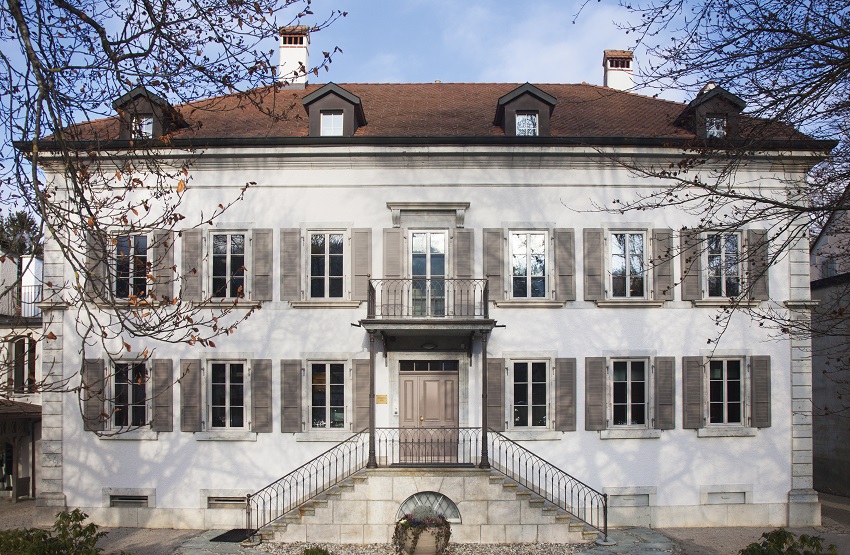
La Maison Parmigiani Fleurier – photo, Parmigiani Fleurier
Before this, Michel Parmigiani was widely recognised as one of the world’s foremost restorers. Such was his painstaking attention to detail and skill, that even the likes of Patek Philippe entrusted him to restore important pieces which can today be found on display in the Patek Philippe Museum in Geneva. A prominent example of this was a Breguet table clock and pocket watch combo known as “Pendule Sympathique”, which had previously been declared irreparable – however, in 1991 and after more than 2000 hours of work, Michel Parmigiani had completed the impossible and breathed new life into this incredible, and historically important, clock.
Founding Parmigiani Fleurier and the Fleurier Quality Seal
Having built a reputation as one of the world’s leading watchmakers and restorers over the previous twenty years, nothing but the same ideals and strive for perfection would do. In the same way that Michel Parmigiani looks at antique clocks and pocket watches and sees them as something special which is worth being restored, the watches created under his own name would need to warrant the same response from watchmakers and restorers in 100, 200 – even 300 years from now.
One of the guiding principles of design that the brand adheres to is that of the Golden Ratio or Golden Spiral – a mathematical ratio which occurs often in the natural world – with items such as spiral shells, hurricanes, and even the human face!
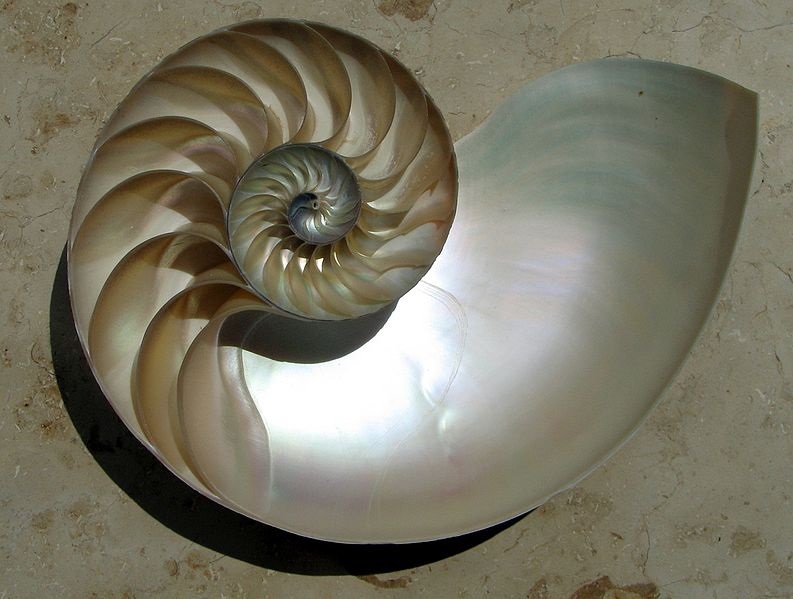
Nautilus shell and the Golden Ratio – photo, Wikipedia by 'Chris 73'
Following the first watch releases under the brand in 1999 (the Toric Perpetual Calendar – quite the statement complication for a first release – and also the Kalpa Hebdomadaire with its in-house developed PF110 calibre), the next step was to articulate exactly what it was about Parmigiani Fleurier which made it stand out from its contemporaries.
But how does one define, and quantify quality? What does the customer expect from quality?
At the turn of the millennium, there already existed quality standards within watchmaking, the most notable of which being the Poinçon de Geneve, or Geneva Seal. However, Michel Parmigiani sought to create a new, higher standard in collaboration with industry colleagues in Fleurier, and in 2001, he announced the foundation of the Fleurier Quality Foundation (FQF) with three founding brands: Bovet Fleurier, Chopard Manufacture and of course Parmigiani Fleurier, followed later by Vaucher Manufacture Fleurier, too.
Two years later in 2003, the FQF announced their Fleurier Quality Certification. You can read more about these quality standards and what the Fleurier Quality Certification entails here. Suffice it to say, however, that it is considered one of the most challenging hallmarks of watchmaking quality to achieve.
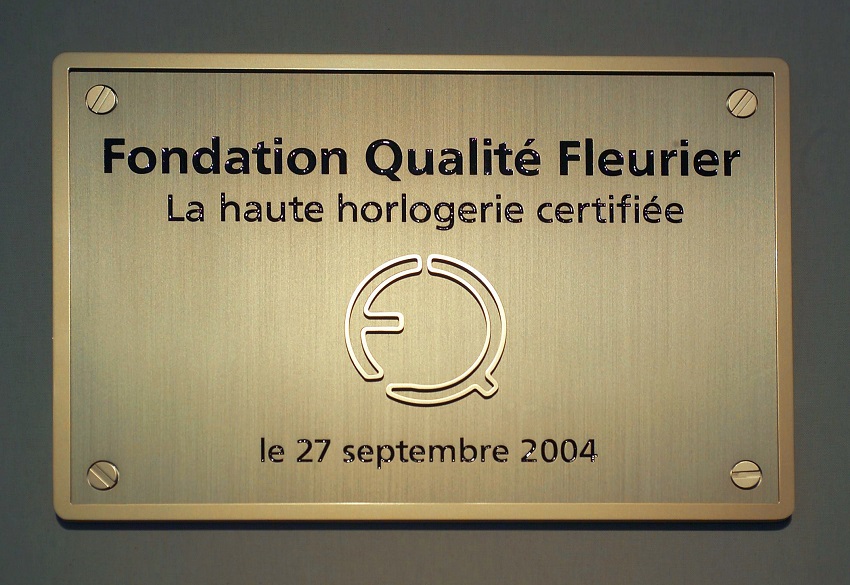
Photo, Fleurier Quality Foundation
It is open to any brand to apply for certification but, owing to its stringent criteria, is reserved to demonstrate the quality of only the finest pieces produced.
Vaucher Manufacture Fleurier
Having established an industry benchmark for quality, the next step is to be able to better ensure and guarantee this level of quality, rather than Parmigiani Fleurier being a brand reliant upon a network of third-party suppliers for different component.
So, Michel Parmigiani and the Sandoz Family Foundation set about building a vertically integrated manufacture, bringing the manufacture of as many components as possible under a single umbrella – for which, of course, Parmigiani Fleurier would become a customer.
Following the acquisitions of case-makers Les Artisans Boîtiers, or LAB (who had previously supported the likes of Patek Philippe and MB&F), and other component manufacturers such as Atokalpa and Elwin, the umbrella group soon had the savoir-faire in-house for making practically all components (except for things like rubies and sapphire crystal) on an industrial scale, including even the hairspring – something that very few manufacturers are capable of doing in-house.
The Vaucher Manufacture Fleurier company was launched in 2003, and today it serves as a watchmaking centre of excellence. As well as serving as a sister company to Parmigiani Fleurier, Vaucher Manufacture Fleurier serves other customers from the world of luxury watchmaking with high-end mechanical watch movements, as well as undertaking research and development in directly in collaboration with customers.
In total, Parmigiani Fleurier has no less than seven facilities, with five individual factories, a restoration building, and the company’s Fleurier headquarters.
Parmigiani Fleurier La Rose Carrée Pocket Watch
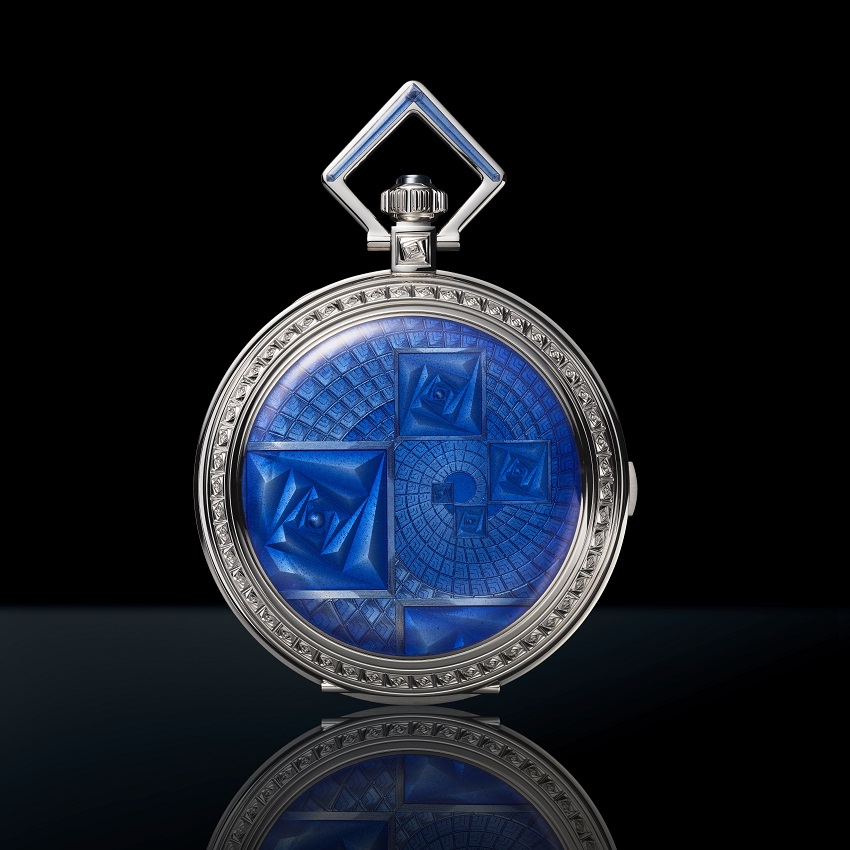
La Rose Carrée Unique Pocket Watch – photos, Parmigiani Fleurier
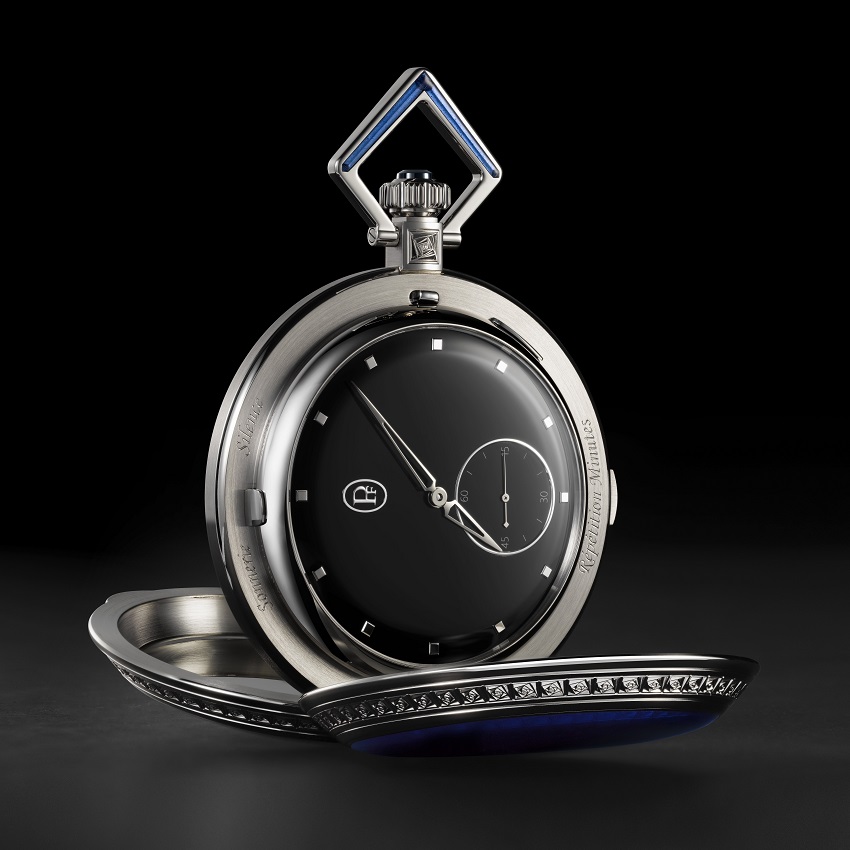
Last year, 2021 marked the 25th anniversary of Parmigiani Fleurier. Where most brands might release a new collection, or a limited edition watch to mark the occasion, Michel Parmigiani decided to create something truly unique, something incredible which reflects not just Parmigiani Fleurier as a brand, but his own personal journey within watchmaking as well.
And boy is it special.
The base of this piece unique is a grande sonnerie and minute repeater movement crafted by the hands of Louis-Elisée Piguet, sometime between 1898 and 1904. It has been lovingly restored in the authentic style of Michel Parmigiani and fitted in a double-hunter, white gold pocket watch case – this means the front and the back covers are hinged, with one cover revealing the dial, and the other revealing the movement.
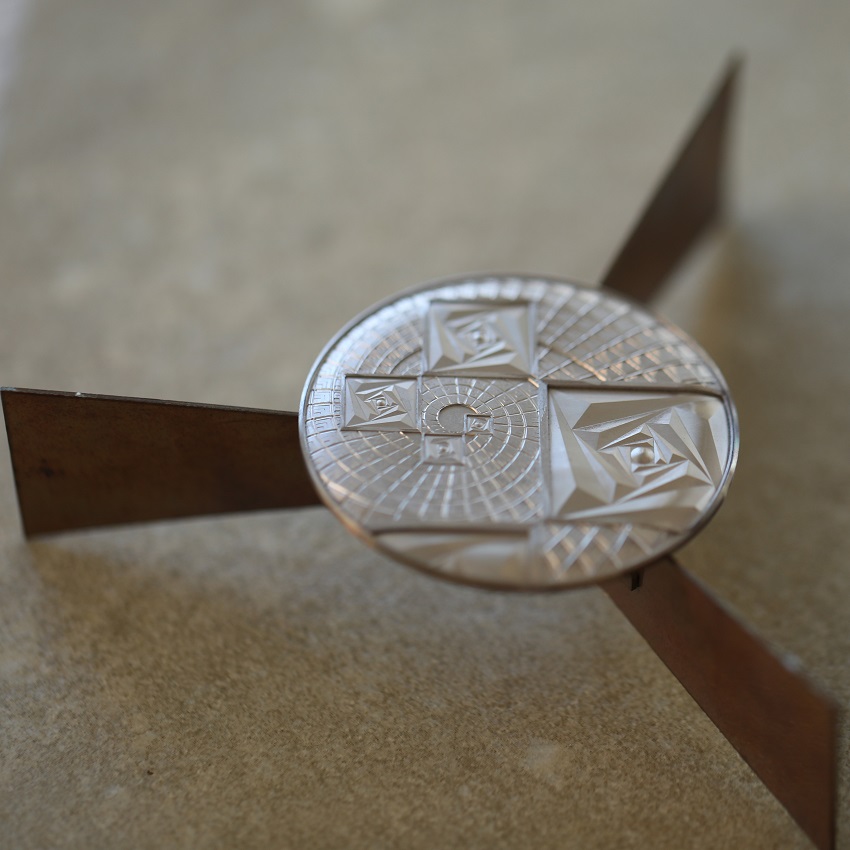
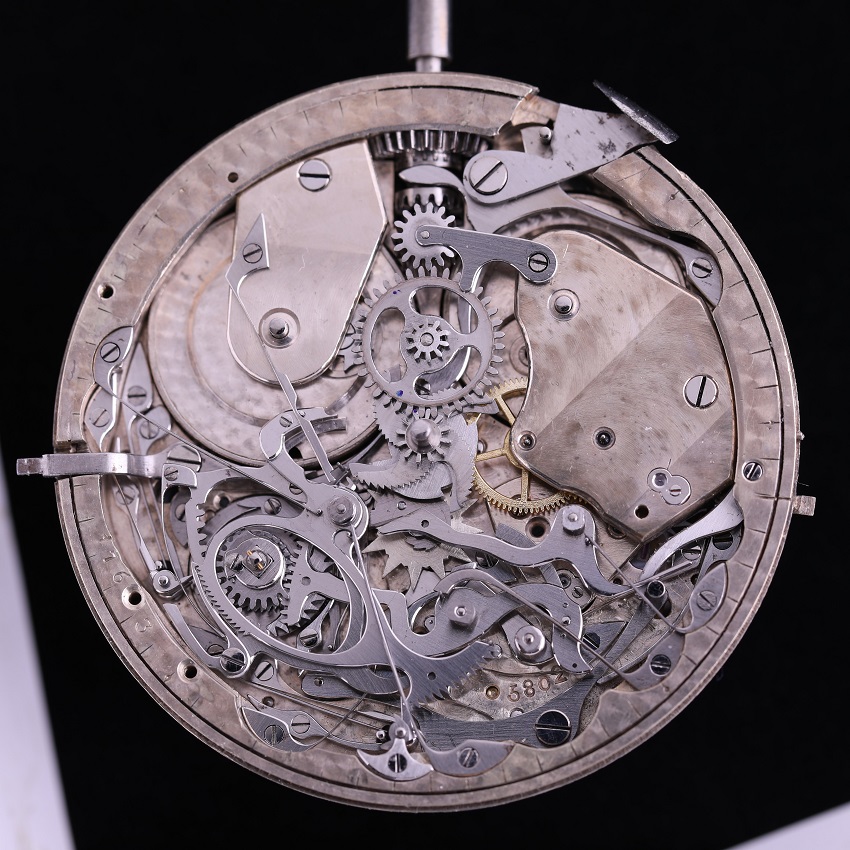
La Rose Carrée – photos, Parmigiani Fleurier
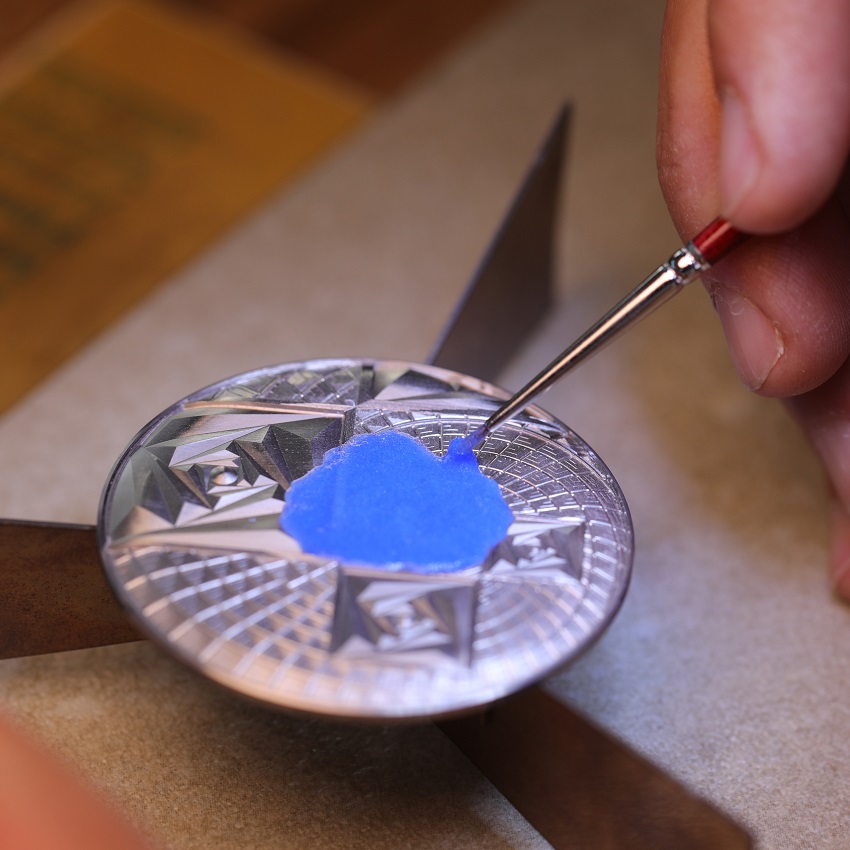
On the outside of the case is a spectacular motif called ‘Rose Carrée’, a design of square rose petals adhering to the Golden Spiral. The motif was engraved by hand by master engraver Eddy Jaquet, the same engraver that worked on MB&F’s GPHG award-winning ‘Around the World in Eighty Days’ Legacy Machine series.
What’s more, once the engraving was completed, there were then three or four layers of bleu grand feu enamelwork done over the top of the engraving, applied by master enameller Vanessa Lecci – imagine, just one mistake, and the work would all have needed to start again. This is testament to the absolute mastery of these crafts beholden to the artisans at Parmigiani Fleurier.
When this piece was announced, I was blown away by it. In the same way that a picture is worth a thousand words, I think this video conveys just how special it is better than I ever could:
I firmly believe that only with a greater appreciation of the story behind a brand, and a fuller understanding of a brand’s DNA, does it become possible to fully appreciate its product for what it is. For me personally, understanding these stories is an integral part of this hobby, and I very much enjoy exploring them.
Whilst Parmigiani Fleurier on the surface is indeed a relatively young brand, entering only its 26th year, hopefully from this article so far you will have come to appreciate that there is a lot more to it – and its founder Michel Parmigiani – than meets the eye.
Indeed, there are not many brands able to claim having produced more than 30 in-house calibres in such a short time!
This, for me, is another reason that I believe the brand deserves to be talked about far more often that it has been previously. And I dare say that many would agree with me; it does appear that Parmigiani Fleurier is starting to receive more widespread recognition, especially around their latest release. And that recognition, in my opinion, is long overdue and well deserved.
Parmigiani Fleurier Current Collections – Tonda and Tonda PF
A driving catalyst for this recognition is the recent release of the Tonda PF micro-rotor (‘tonda’ meaning ‘round’ in Italian), and it is easy to see why. I have been fortunate to be able to get hands on with the Tonda PF on a few recent occasions, and each time I have been super impressed.
It looks fantastic up close with a deceptively simple dial; on closer inspection, it features a subtle guilloche motif called “grain d’orge”, which depending on how the light hits the dial almost gives it a matte appearance. This works wonderfully with the knurling finish on the bezel as well.
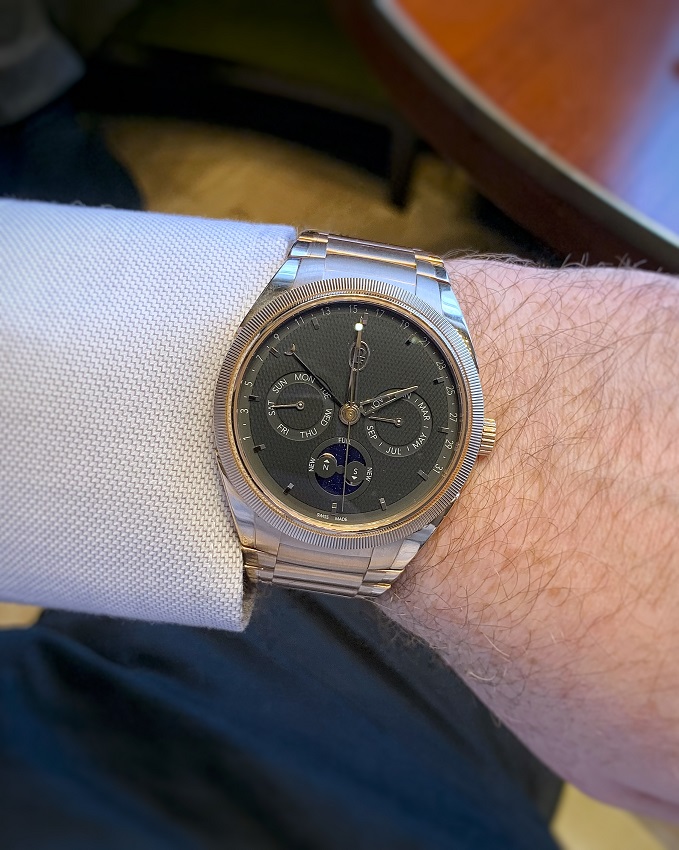
Tonda PF Annual Calendar Rose Gold
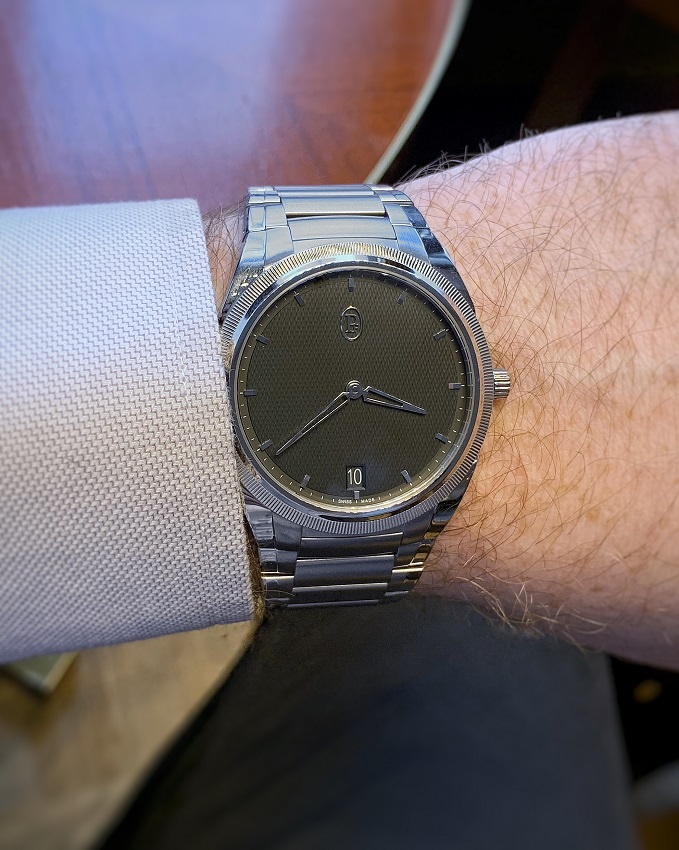
Tonda PF Micro Rotor
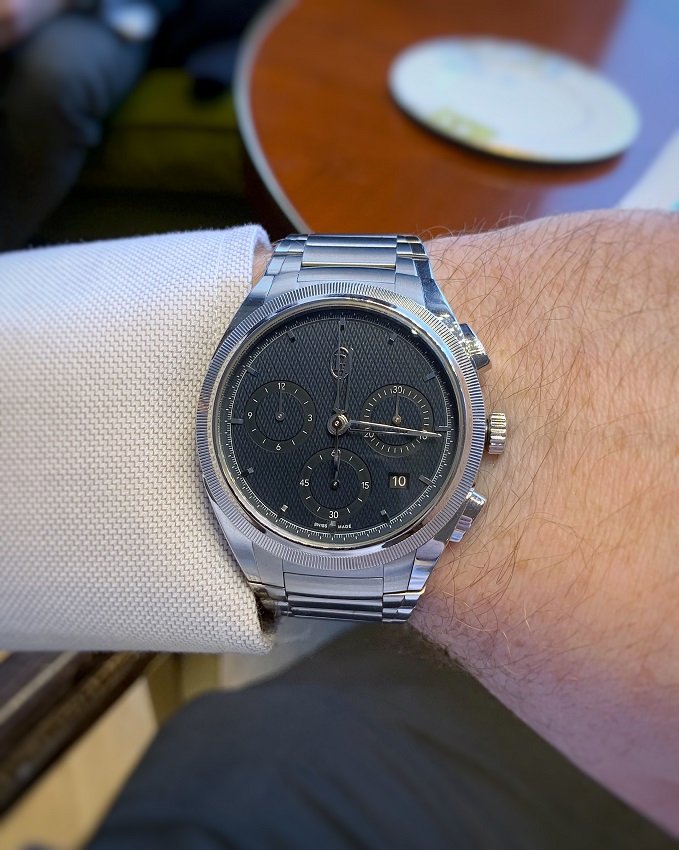
Tonda PF Chronograph
The Tonda PF introduces a new, low-key ‘PF’ logo to the dial, which matches the discreet indices, hands, and the date window at 6 o’clock with a matching colour to the dial. Overall, this is very much a watch that I would describe as falling into the “if you know, you know” category (and taking a step back, I think this applies to the brand, too).
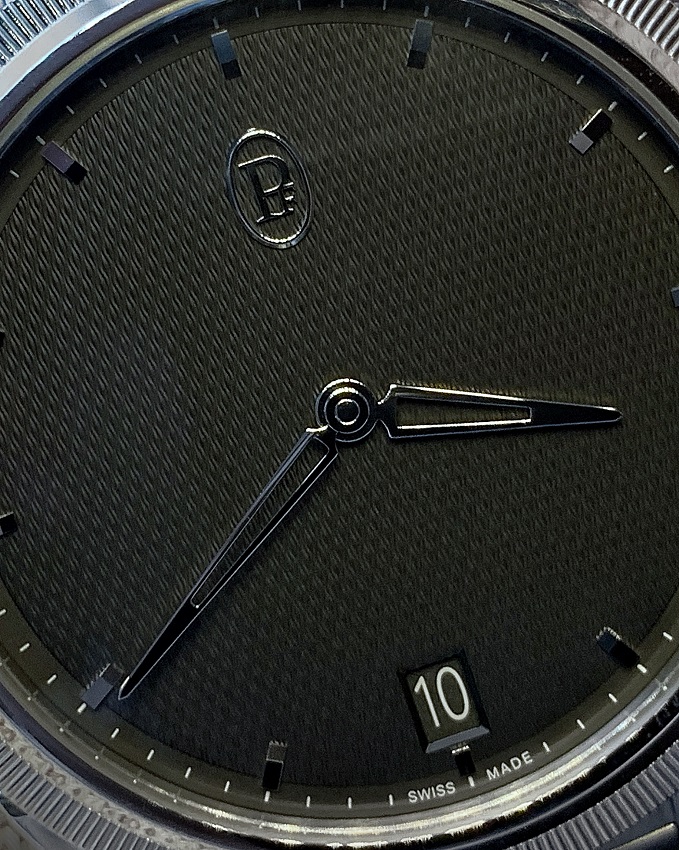
Tonda PF Micro Rotor dial macro
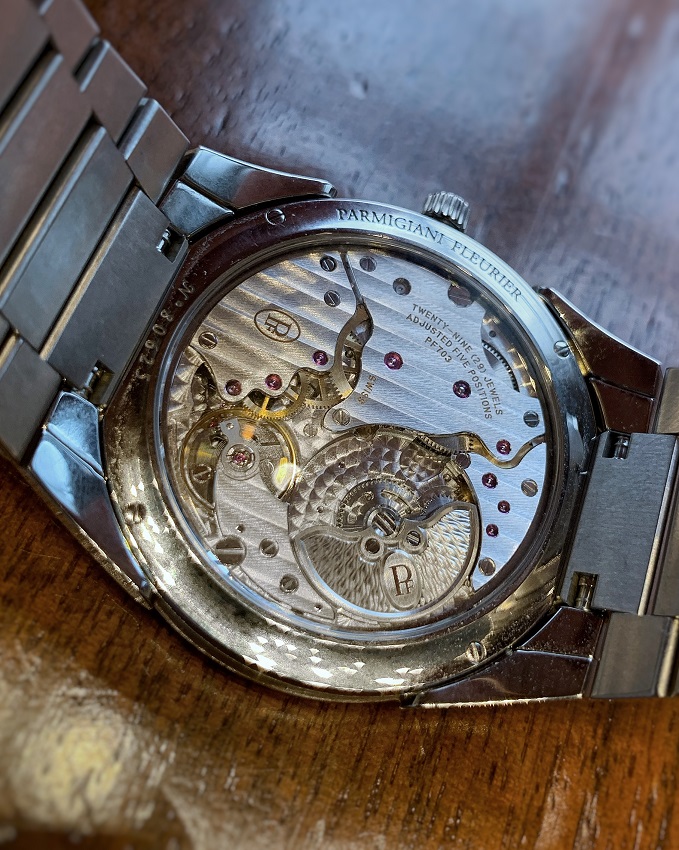
Calibre PF703 in the Tonda PF Micro Rotor
During the time I spent with the watch, the one thing which stood out most for me was how incredibly comfortable it was on my wrist. The 40mm watch is the sweet spot in size on my wrist, and is also only 7.8mm thick – the impeccably finished PF703 micro-rotor movement inside is itself just 3.07mm thick!
This is accentuated further still thanks to the downward angle of the lugs, as well as the bracelet links; the links themselves aren’t very wide, and as they can flex through an extensive range, the bracelet really hugs the circumference of the wrist. There is a taper on the bracelet, with a polished finish which gradually recedes with the taper, tying the whole aesthetic together nicely. The clasp features the new ‘PF’ logo as well, which I think is a nice touch.
It might sound a little strange to say, but you really can feel the quality.
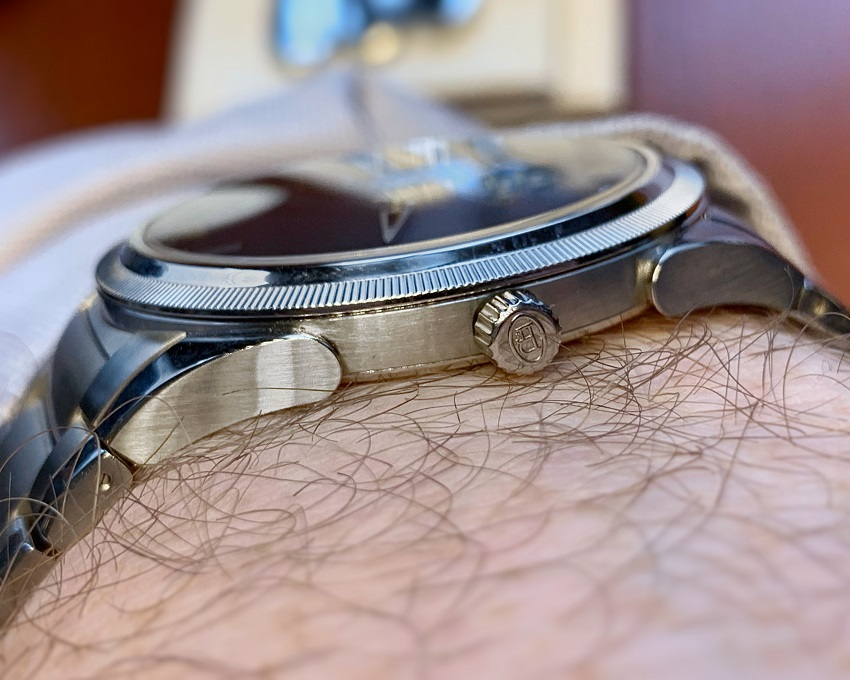
Note the downward turning lugs and low profile of the case
The Tonda PF is available in a micro-rotor, annual calendar or chronograph, and there was also a 25-piece limited edition split-second chronograph.
So how does the Tonda PF differentiate from the rest of the Tonda collection? I think the best way I could describe the difference is to describe the Tonda PF as a somewhat refined subset of the wider Tonda collection, almost like the Tonda PF is more about letting the watch speak for itself.
Within the core Tonda collection, generally speaking the watches comprise pieces with busier dials: the indices are a little longer and protrude further into the dial face, the hands are slightly thinner without a filled in tip, and each piece has a grande date display as well as either a small-seconds display or other complication such as a chronograph or flyback chronograph. The new ‘PF’ logo, as opposed to the earlier ‘Parmigiani Fleurier’ logo serves to simplify the dial as well.
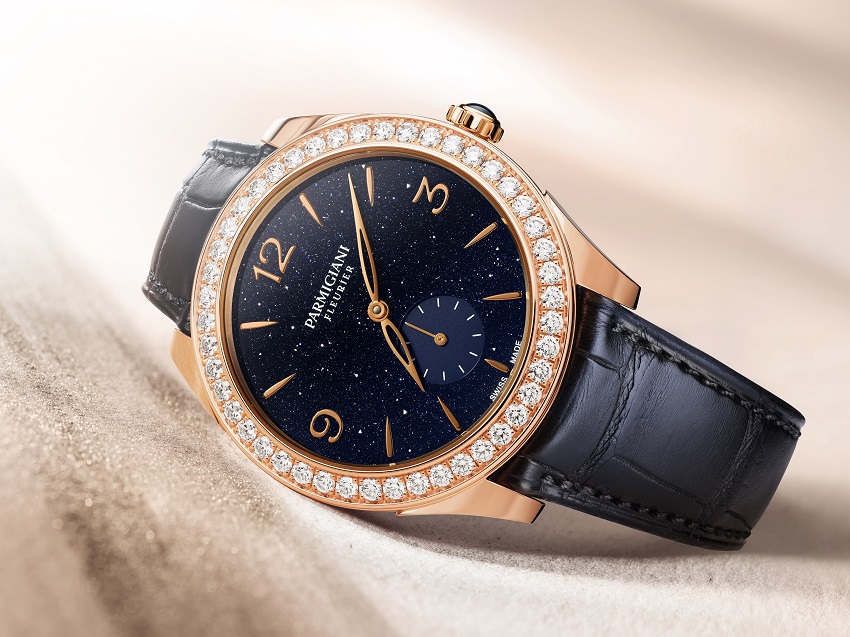
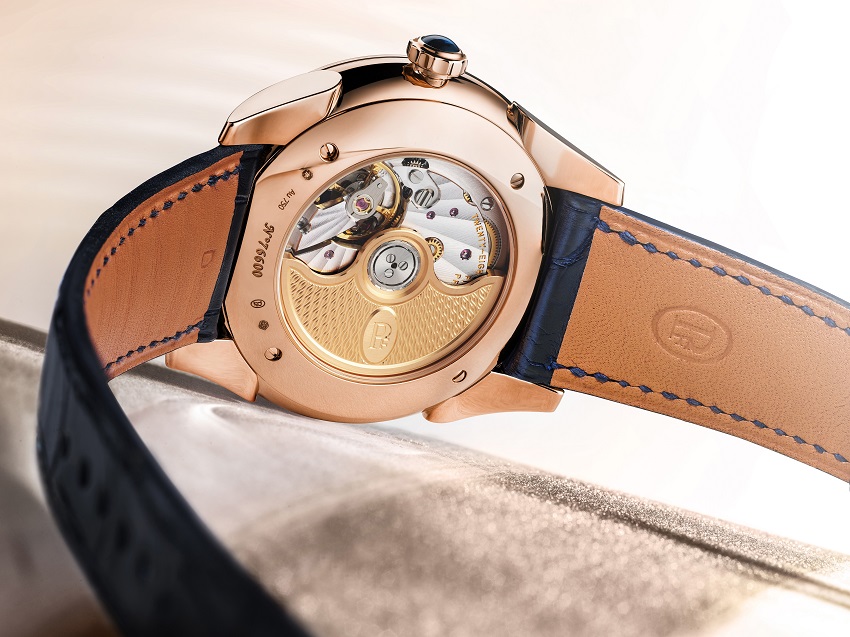
Watches from the Tonda collection – photos, Parmigiani Fleurier
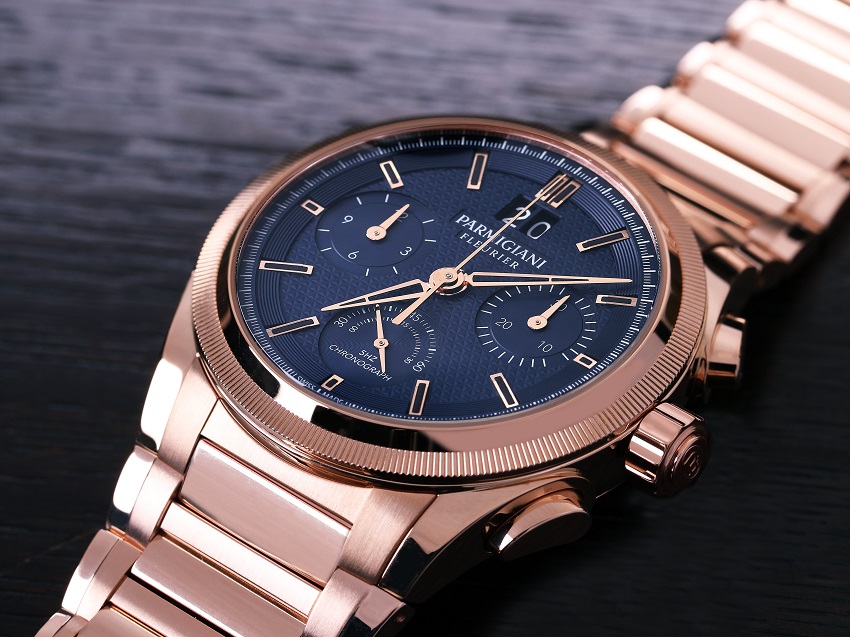
Toric
Toric was the first wristwatch produced by Parmigiani Fleurier. This is where the oft-seen gadroon-and-knurling finish on the bezel of a Parmigiani Fleurier watch originates, which went on to become one of the brand’s aesthetic hallmarks (assuming of course the watch bezel is not adorned with diamonds or a deliberately polished finish).
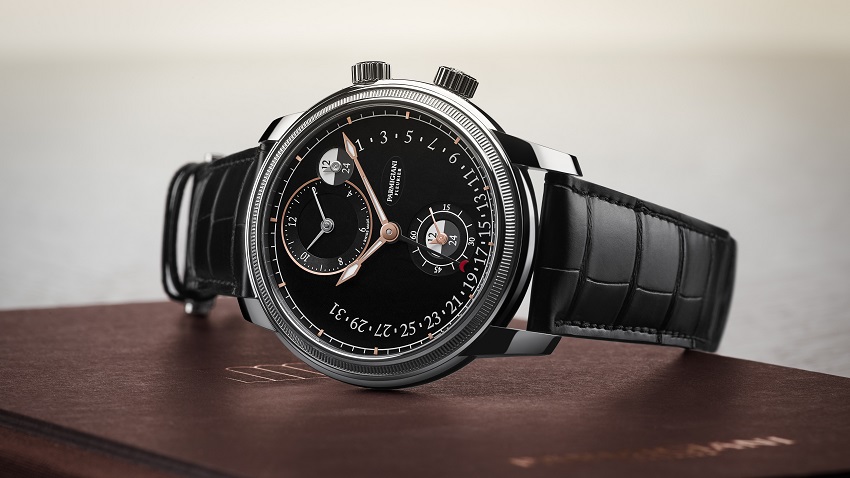
Toric Hemisphere – photo, Parmigiani Fleurier
Each bezel with this finish is completed entirely by hand, which makes each one unique. In fact, it has been undertaken by the same artisan since 1996.
The Toric collection is inspired by Ancient Greek columns and is the most exclusive collection with fewer references than both the Tonda and Kalpa collections. The design of these watches is one that was deliberately done so as to be a timeless aesthetic, in accordance with Michel Parmigiani’s desire to see his work surviving the test of time.
Whilst the other collections include watches with complications, the Toric collection demonstrates the brand’s savoir-faire astutely, with revered complications such as the tourbillon and perpetual calendar, as well as travel time or date complications.
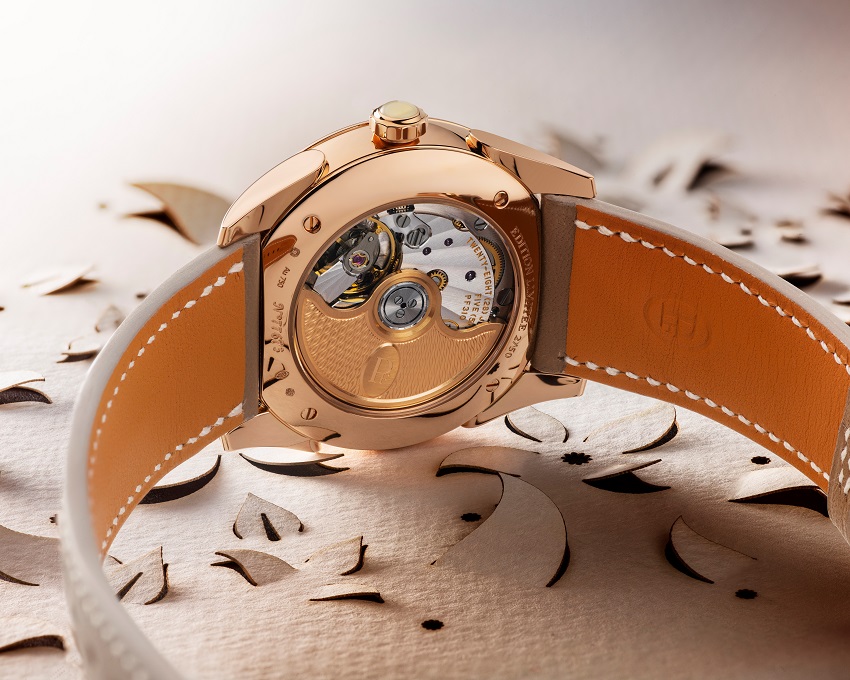
Toric Fleur caseback – photo, Parmigiani Fleurier
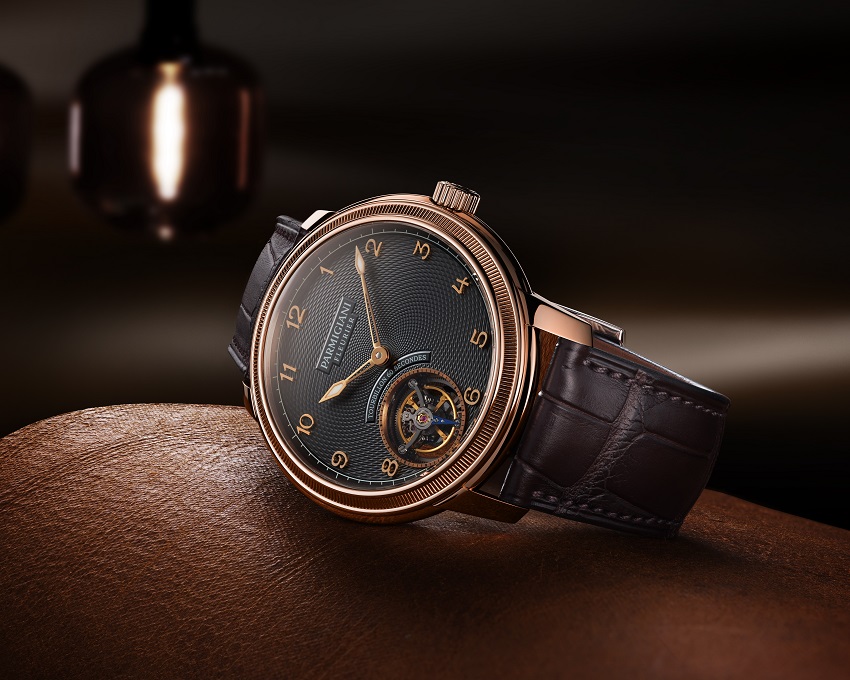
Toric Tourbillon Slate – photo, Parmigiani Fleurier
Toric is the only collection from Parmigiani Fleurier without pieces specifically designed with ladies in mind – that being said, despite the size being a little on the larger size at between 41-43mm, there would look equally fantastic on anybody.
Testament to the quality of the watches, the Toric Hemispheres Retrograde was awarded the GPHG Travel Time Watch Award in 2017.
Kalpa
Finally, the Kalpa collection is distinguishable by its use of the tonneau case shape. The lugs on this case design are teardrop shaped, with a curvature adhering to the principles of the Golden Ratio, just like a spiral seashell.
When Parmigiani Fleurier released their first Toric watch, the first Kalpa was released alongside it. It has remained a part of the catalogue ever since as a consistent part of the Parmigiani Fleurier offering.
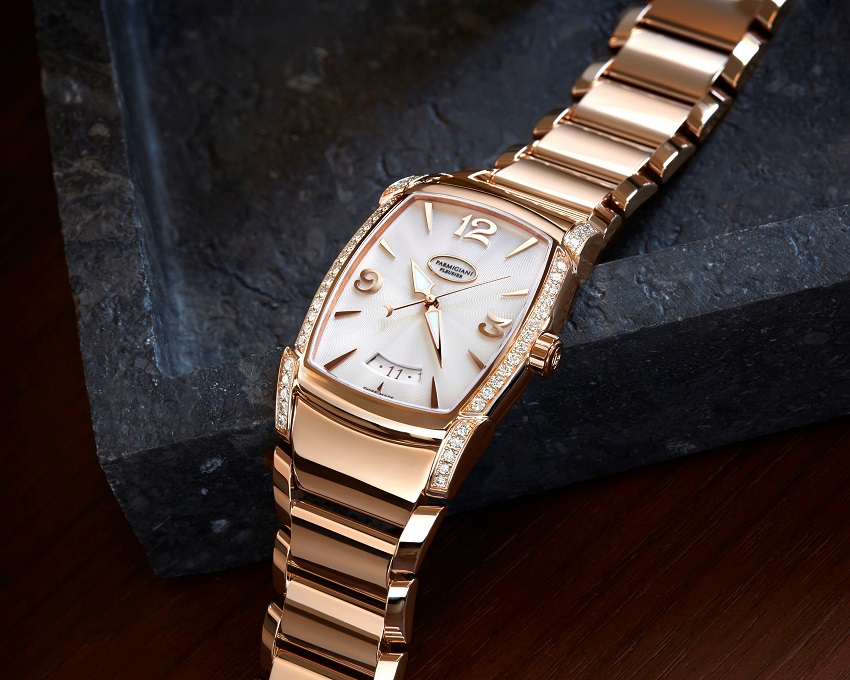
Kalpa collection pieces – photos, Parmigiani Fleurier
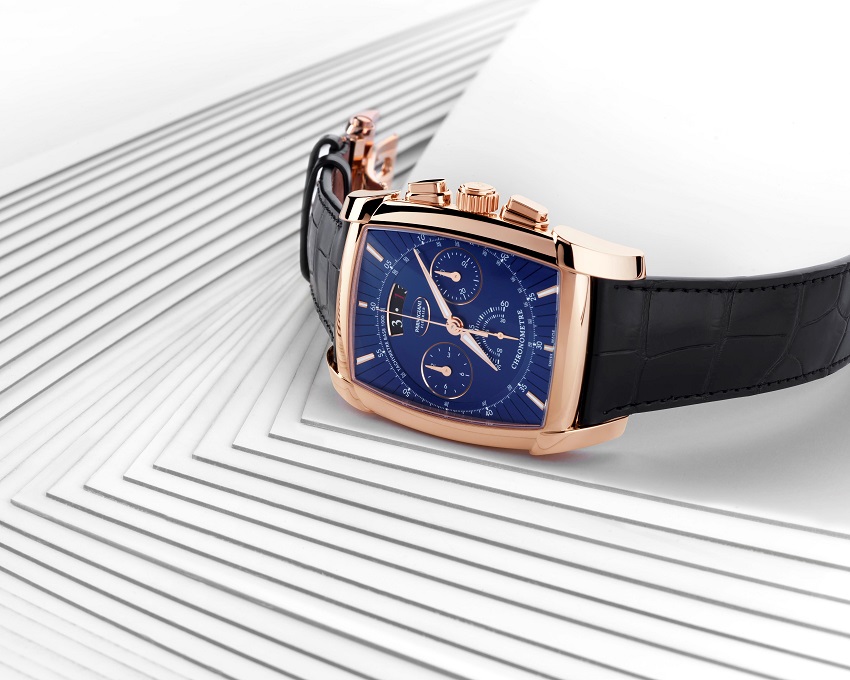
The current collection offers a raft of chronograph (or Kalpagraphe) references on a rubber or leather strap, and includes open-worked dial references, closed dial references, and smaller ladies’ pieces available without the chronograph complication, and also on a matching gold bracelet for those who prefer a bracelet option to a strap.
Where it is not uncommon for pieces specifically designed and decorated for ladies to be powered by a quartz movement, there is no compromising on quality with Parmigiani Fleurier; each watch from each collection is powered by an immaculately finished, high-end mechanical movement.
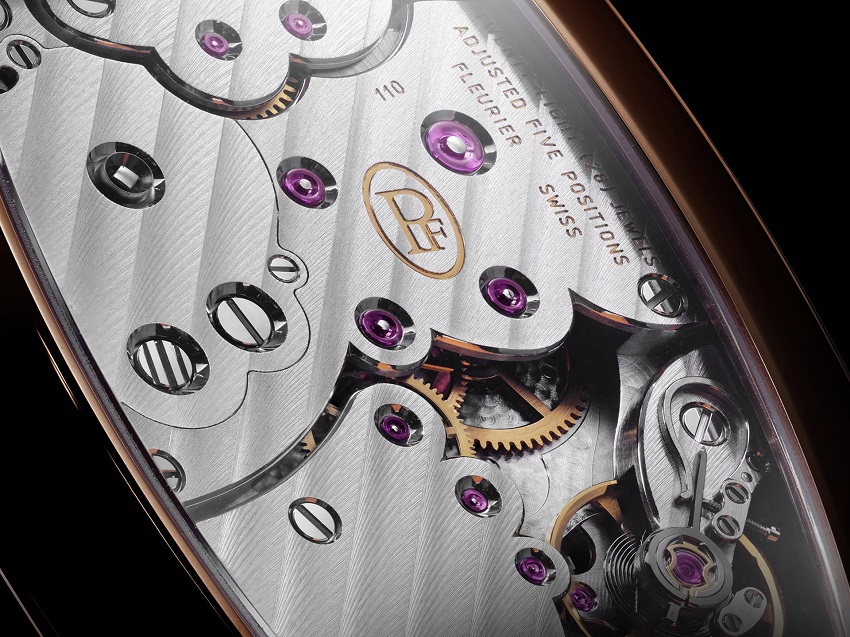
Kalpa caseback – photo, Parmigiani Fleurier
A new dawn for Parmigiani Fleurier?
As a brand, Parmigiani Fleurier has been built on the most solid of foundations, with a founder who is both passionate and one of the most well-respected restorer/watchmakers in the industry, and a surrounding infrastructure that many could only dream of in Vaucher Manufacture Fleurier. And yet it is a brand which doesn’t seem to receive a widespread appreciation that I believe it most certainly warrants.
Parmigiani Fleurier has a rather niche clientele, only making 2000 pieces or so a year (although this is soon increasing to approximately 3000). So, striking the desired balance between this, and a wider appreciation of the brand will be a challenge for sure.

Guido Terreni and Michel Parmigiani – photo, Parmigiani Fleurier
Enter Guido Terreni, former Head of Bulgari Watches, who in his time between 2009-2021 oversaw the launch and introduction of one of the most successful watch families in recent times – the Octo Finissimo. Already, he has already overseen the introduction of the Tonda PF in 2021 which has been well received with widespread acclaim.
So, are we at the point of a seeing a new dawn for the brand? Well, it is undeniably an exciting time for Parmigiani Fleurier. With the watchmaking know-how of Michel Parmigiani combined with the brilliant mind of Guido Terreni, I think we are looking at a brand with an extremely bright future ahead, and I for one am excited to see what they have in store!
In Summary
As I mentioned earlier, personally I feel that Parmigiani Fleurier is a brand which deserves to be talked about more that it has been previously. With the recent launch of the hugely successful Tonda PF collection, as well as the showcasing of skill with the magnificent La Rose Carrée Pocket Watch, I think the tide is starting to turn with Parmigiani Fleurier starting to receive the attention that it deserves.
There aren’t many brands out there who can say that they do as much as in the process of making their watches as Parmigiani Fleurier do, and then again to the level of high quality that they do. It can be difficult to fully appreciate watches from photos or reading about them – the best way to fully appreciate the quality of these watches is to try them on. The results really do speak for themselves.
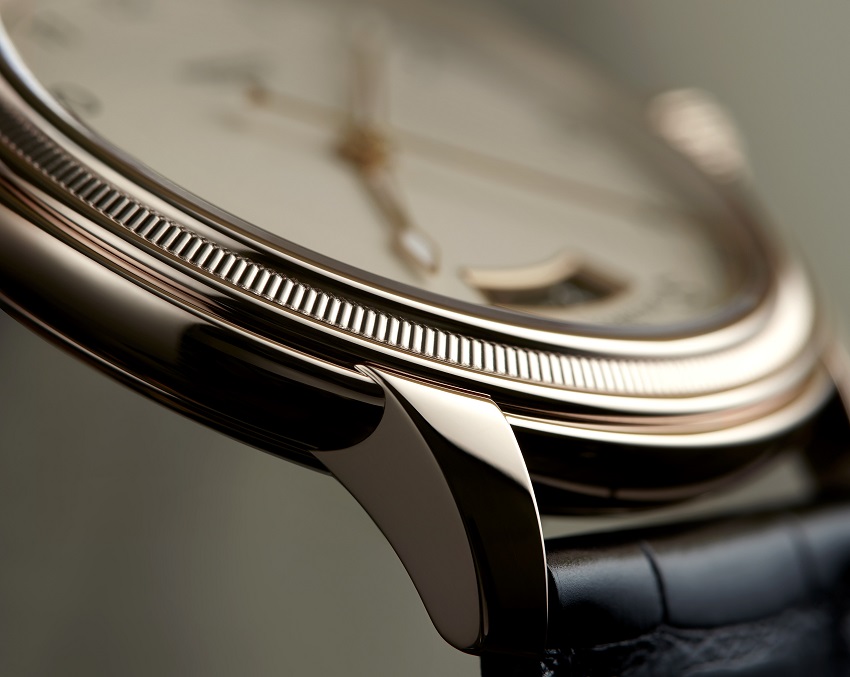
Knurling-Gadroon finish on the bezel – photo, Parmigiani Fleurier
My hope is that after having read this, you will have learned something you didn’t know about the brand and perhaps take away a greater level of appreciation for Parmigiani Fleurier. To learn more about the brand – be sure to visit the Parmigiani Fleurier website, and for those of you in the UK interested in perhaps acquiring a piece, reach out and speak to our partners at The Limited Edition.
If you have any questions, please get in touch via our Contact page, or via our Instagram.
You might also be interested in:
- Independent Watchmaking – An Ode to the Indies
- Spotlight: Schwarz Etienne
- Spotlight: Laurent Ferrier
- Watch Books, Watch Boxes and more at the Watch Affinity Shop on Amazon (commissions earned)
As an Amazon Associate, I earn from qualifying purchases – thank you for your support
More about Watch Affinity’s Partnership with The Limited Edition

As smaller entities, independent watchmakers and brands are far more susceptible than those with corporate backing to the economic effects that will inevitably be felt following the Covid-19 pandemic, and so I felt it was important for me to try and do something to help.
The result of this was Watch Affinity’s partnership with The Limited Edition, a UK-based retailer specialising in independent watchmaking, and even working directly with indie brands, watchmakers, and collectors to collaborate on unique pieces, too. I will publish regular articles such as this one, shining the Watch Affinity Spotlight on an independent watchmaker or brand, in an effort to showcase both the brand and their timepieces and spread the word and perhaps even coverage of some exciting events in the future, too!